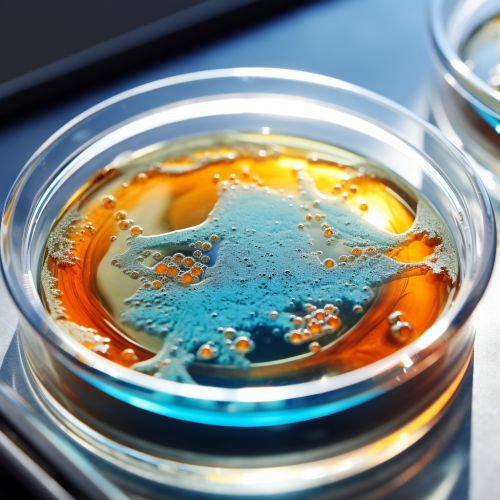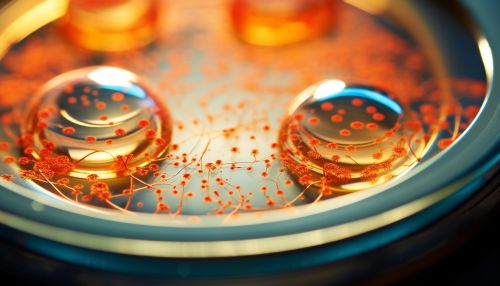Microbial Physiology and Biochemistry
Introduction
Microbial physiology and biochemistry involve the study of the functional processes and chemical phenomena in microorganisms. This field of study is crucial in understanding the mechanisms of microbial growth, their metabolic pathways, the function of microbial cellular structures, and how these factors affect the environment and human health.


Microbial Growth
Microbial growth refers to the increase in the number of cells rather than the size of the individual cells. It is a complex process that depends on various environmental conditions, including temperature, pH, and nutrient availability. The growth of microorganisms is typically studied in a controlled environment, such as a microbiology laboratory, using various growth media that provide the necessary nutrients.
Phases of Microbial Growth
Microbial growth typically follows a predictable pattern divided into four phases: lag phase, exponential (log) phase, stationary phase, and death phase.
The lag phase is a period of adjustment where the cells prepare for growth but do not divide. During the exponential phase, the cells divide at a constant rate, leading to a rapid increase in cell numbers. The stationary phase occurs when the rate of cell growth equals the rate of cell death. Finally, in the death phase, the rate of cell death exceeds the rate of cell growth due to exhaustion of nutrients and accumulation of waste products.
Microbial Metabolism
Microbial metabolism refers to the chemical reactions that occur within microorganisms to sustain life. These reactions can be categorized into two types: catabolism and anabolism.
Catabolism involves the breakdown of complex organic molecules into simpler ones, releasing energy in the process. This energy is then used to drive the reactions of anabolism, which involve the synthesis of complex molecules from simpler ones.
Energy Generation in Microorganisms
Microorganisms generate energy through various metabolic pathways, including glycolysis, the Krebs cycle, and oxidative phosphorylation.
Glycolysis is the process of breaking down glucose into pyruvate, producing a small amount of ATP (adenosine triphosphate) and NADH (nicotinamide adenine dinucleotide). The Krebs cycle, also known as the citric acid cycle, is a series of chemical reactions used by all aerobic organisms to generate energy. Oxidative phosphorylation is the metabolic pathway in which cells use enzymes to oxidize nutrients, thereby releasing energy which is used to produce ATP.
Microbial Cellular Structures
Microorganisms possess various cellular structures that play crucial roles in their survival and function. These include the cell wall, cell membrane, cytoplasm, and various organelles.
The cell wall provides structural support and protection to the cell. In bacteria, the cell wall is composed of peptidoglycan, while in fungi, it is made up of chitin. The cell membrane regulates the movement of substances in and out of the cell. The cytoplasm is a gel-like substance inside the cell where most metabolic reactions occur. Organelles such as ribosomes, plasmids, and nucleoids are involved in protein synthesis, genetic exchange, and storage of genetic information, respectively.
Impact on Environment and Human Health
Microorganisms play a vital role in maintaining the earth's ecosystems. They are involved in nutrient cycling, decomposition of organic matter, and maintaining soil fertility. However, some microorganisms can also cause diseases in humans and other organisms, leading to significant health and economic impacts.
